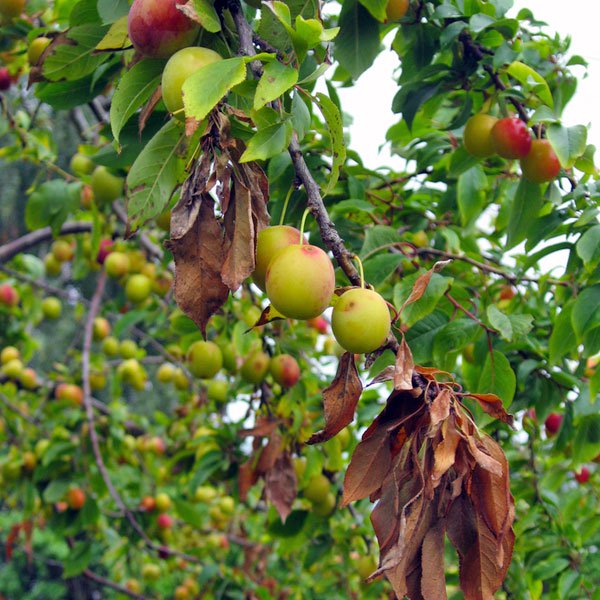
Disease Managementĭuring spring and summer, prune out infected branches 8 in. The bacteria spread rapidly through the plant tissue in warm temperatures (65 ☏ or higher) and humid weather. Insects also help spread the disease to healthy plants. In spring, the bacteria ooze out of the cankers and attract bees and other insects. The bacterium can survive the winter in sunken cankers on infected branches.


Once established in the tree, fireblight quickly invades through the current season's growth into older growth.įireblight can be spread from diseased to healthy plants by rain, wind, and pruning tools. Initially the disease often enters the tree through natural openings, especially flowers and wounds in the spring. Dead leaves and fruit remain on the branches. Branches may be bent, resembling what is commonly referred to as a “shepherd's crook” (Figure 1). Young twigs and branches die from the terminal end and appear burned or deep rust colored. The bark at the base of blighted twigs becomes water soaked, then dark, sunken, and dry cracks may develop at the edge of the sunken area. Shephard's crook, a typical symptom of fireblight. The plants affected include Amelanchier (serviceberry), Chaenomeles (flowering quince), Cotoneaster (cotoneaster), Crataegus (hawthorn), Eriobotrya (loquat), Malus (apple and crabapple), Photinia (photinia), Prunus (flowering almond, plum and cherry), Pyracantha (pyracantha), Pyrus (pear), Rosa (rose), and Spiraea (spirea).įigure 1. The disease affects plants in the Rosaceae family, which includes trees and shrubs in orchards, nurseries and landscape plantings. Here are some facts and methods to help you avoid and control the disease.

Fire blight attacks blossoms, leaves, shoots, branches, fruits, and roots. Fireblight can be a problem in Georgia and is particularly prevalent in some counties. Mila Pearce, Former IPM Homeowner Specialistįireblight is a destructive, highly infectious, and widespread disease caused by the bacterium Erwinia amylovora. Alfredo Martinez, Extension Plant Pathologist


 0 kommentar(er)
0 kommentar(er)
